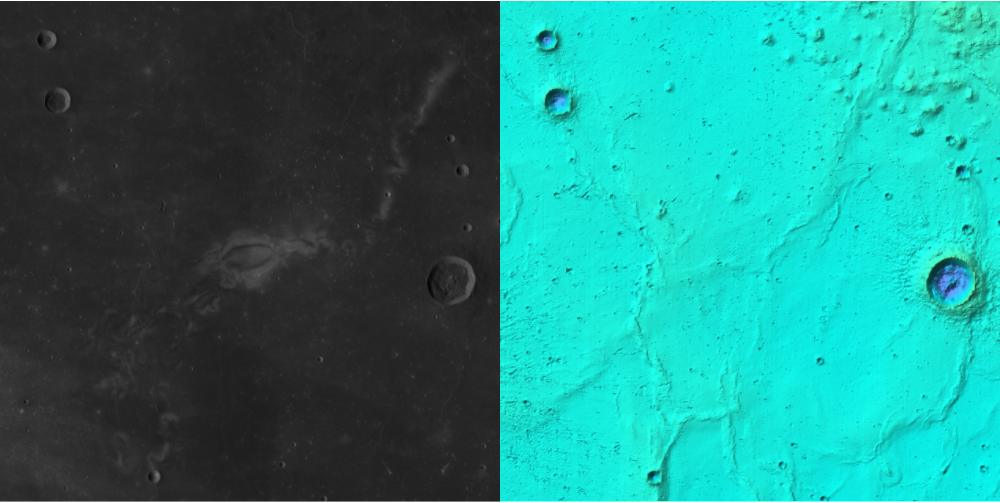GeoElevationData is typically used to explore elevation data from Earth, but it also includes lunar data in version 11.2. Below I have created a number of examples highlighting some of the more interesting areas of the Moon. I have chosen to use the same ColorFunction for all examples to help highlight the differences in elevation. The colors do not correspond to actual lunar colors. To show the maximum amount of detail, I have used GeoZoomLevel of 7 which is the maximum data resolution currently available. BoxRatios is hardcoded in all cases to enforce a square surface range (works well with GeoDisk) and fixed vertical scale. Otherwise, areas near the poles might appear distorted due to projection effects. This method works well for relatively small areas visualized using ListPlot3D, but may not extend to other visualization methods.
When people think of the Moon, the first thing that pops into their head is usually "craters". Often they envision endless fields of craters. The southern highlands of the Moon do often create this kind of a view. Here is a view centered on the crater Baco showing the surrounding region. As expected, there are craters all over the place, some big and some small.
baco = GeoElevationData[
GeoDisk[Entity["SolarSystemFeature", "BacoMoon"],
Quantity[100, "Kilometers"]], GeoZoomLevel -> 7];
ListPlot3D[Reverse[baco], PlotRange -> All, Mesh -> None,
ColorFunction -> "DarkTerrain", BoxRatios -> {1, 1, .05}, ImageSize -> 1000,
SphericalRegion -> True, ViewAngle -> Pi/15, Boxed -> False, Axes -> False]
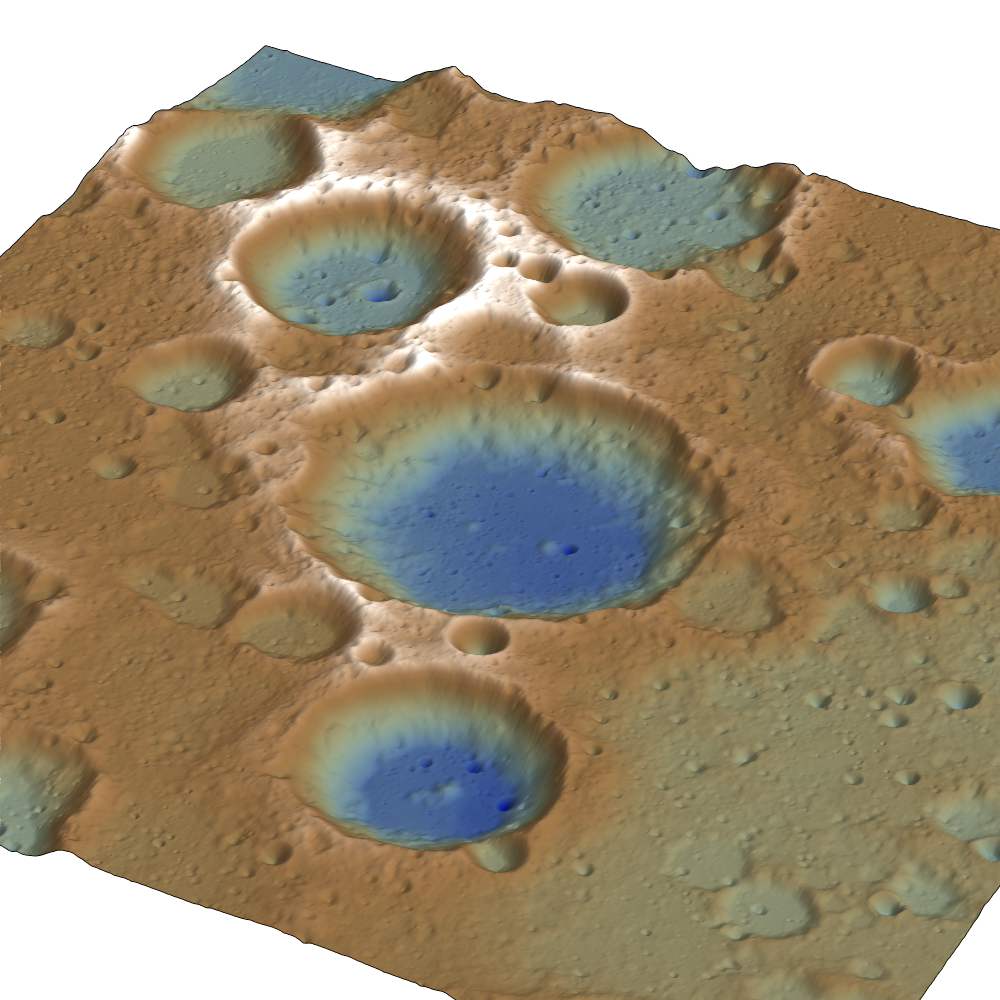
One of the more well-known craters is Copernicus crater. Its crater rim has a terraced wall and noticeable peaks in its center that are likely due to rebound from the initial impact that formed it.
copernicus =
GeoElevationData[
GeoDisk[Entity["SolarSystemFeature", "CopernicusMoon"],
Quantity[100, "Kilometers"]], GeoZoomLevel -> 7];
ListPlot3D[Reverse[copernicus], PlotRange -> All, Mesh -> None,
ColorFunction -> "DarkTerrain", BoxRatios -> {1, 1, .05}, ImageSize -> 1000,
SphericalRegion -> True, ViewAngle -> Pi/15, Boxed -> False, Axes -> False]
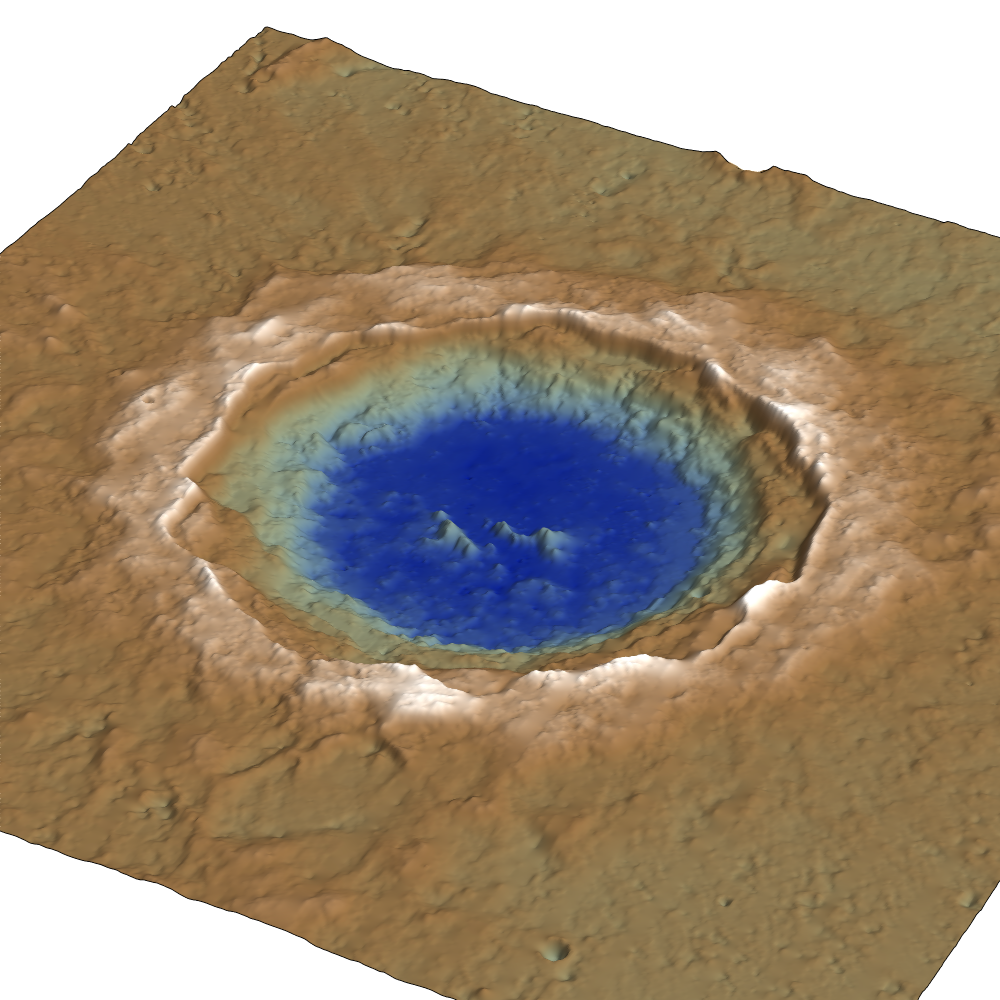
Not all craters are alike. Lunar craters show a large variety of "personality". For example, Gassendi crater has a fractured floor and a rim that is broken by another crater that formed later.
gassendi =
GeoElevationData[
GeoDisk[Entity["SolarSystemFeature", "GassendiMoon"],
Quantity[100, "Kilometers"]], GeoZoomLevel -> 7];
ListPlot3D[Reverse[gassendi], PlotRange -> All, Mesh -> None,
ColorFunction -> "DarkTerrain", BoxRatios -> {1, 1, .05}, ImageSize -> 1000,
SphericalRegion -> True, ViewAngle -> Pi/15, Boxed -> False, Axes -> False]
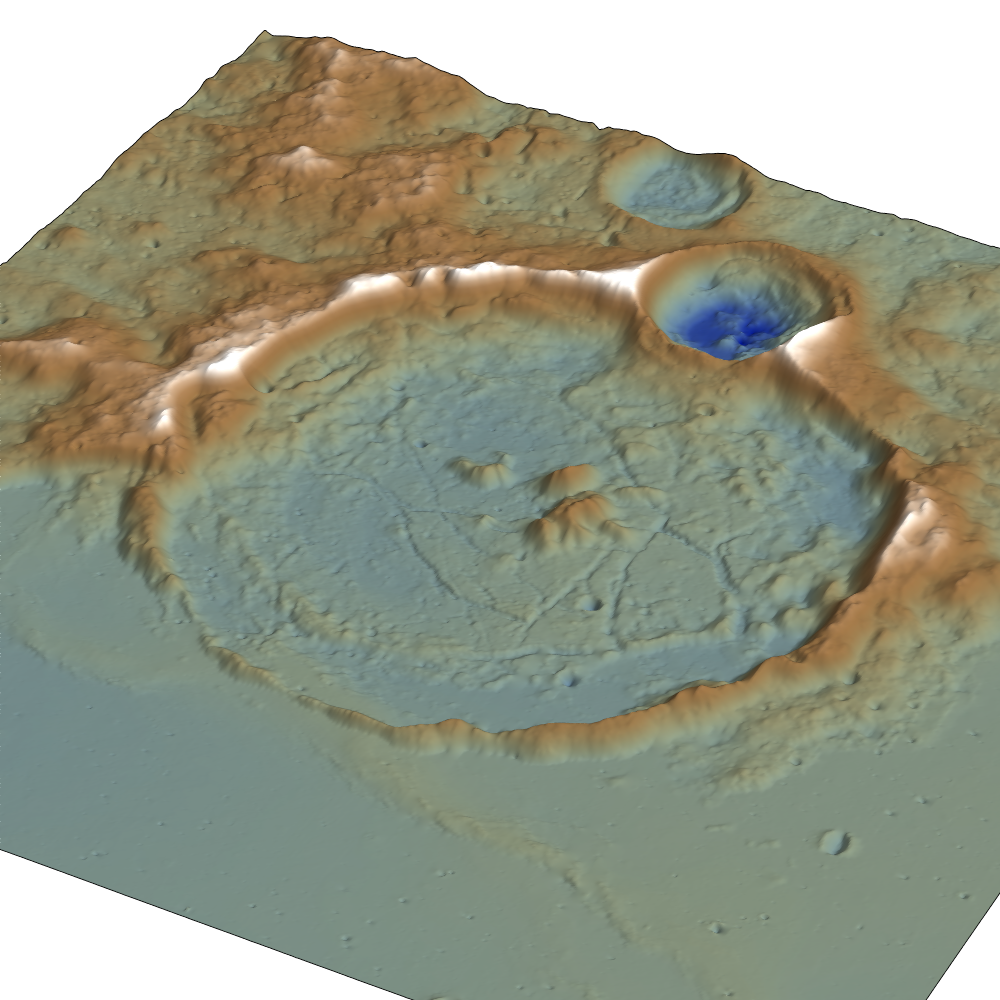
Kies crater has been flooded by basaltic lava leaving only a remnant of it's rim still visible. Lighting has been adjusted to have a low angle relative to the surface to emphasize the low rolling hills in the surrounding lava plain. If you look carefully, there is a small hill, to the left of Kies crater that has a small crater near its peak. It is thought to be a volcano.
kies = GeoElevationData[
GeoDisk[Entity["SolarSystemFeature", "KiesMoon"],
Quantity[100, "Kilometers"]], GeoZoomLevel -> 7];
ListPlot3D[Reverse[kies], PlotRange -> All, Mesh -> None,
ColorFunction -> "DarkTerrain", BoxRatios -> {1, 1, .05}, ImageSize -> 1000,
SphericalRegion -> True, ViewAngle -> Pi/15, Boxed -> False, Axes -> False,
Lighting -> {{"Directional", White, ImageScaled[{1, .1, 1}]}}]
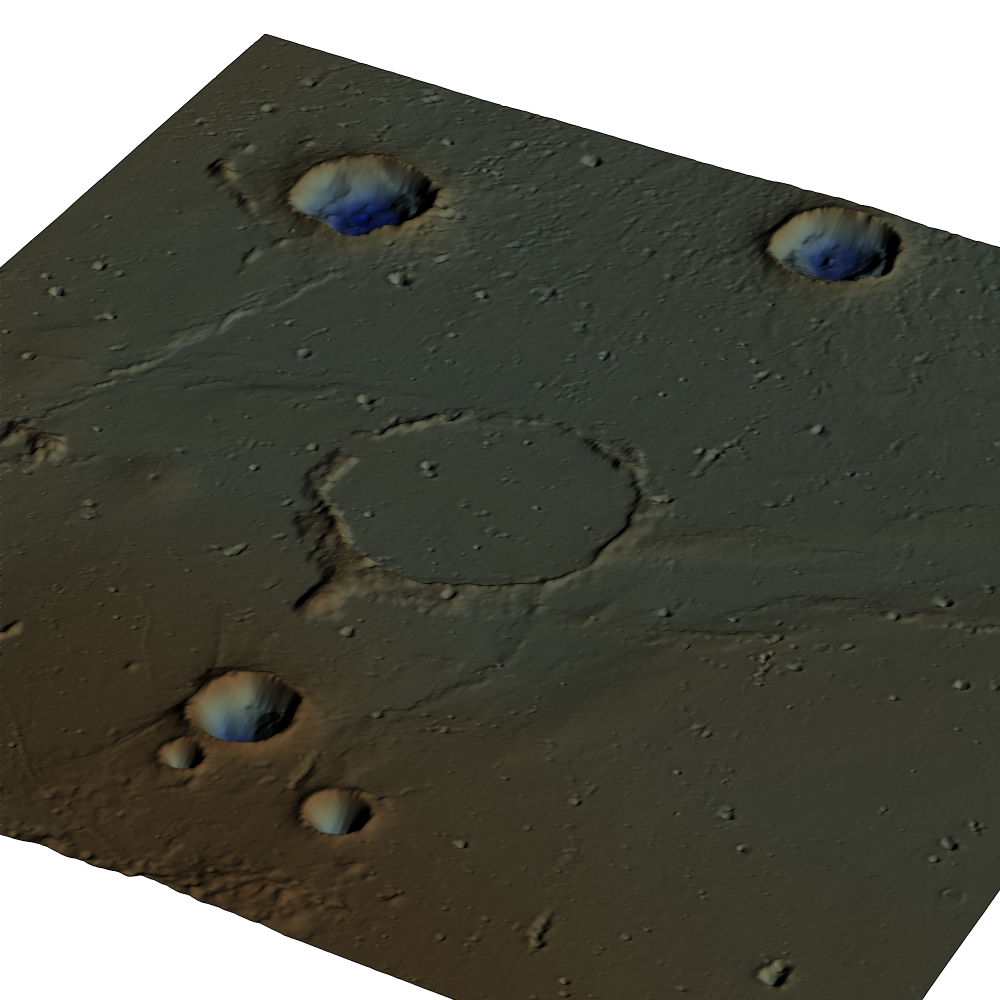
Cruger crater also shows evidence of lava flooding its floor, but in this case its surrounded by more irregular terrain. The flooding seems more limited to the crater itself. At its center is a much smaller and more recent crater that happened after the lava flooding.
cruger = GeoElevationData[
GeoDisk[Entity["SolarSystemFeature", "CrugerMoon"],
Quantity[100, "Kilometers"]], GeoZoomLevel -> 7];
ListPlot3D[Reverse[cruger], PlotRange -> All, Mesh -> None,
ColorFunction -> "DarkTerrain", BoxRatios -> {1, 1, .05}, ImageSize -> 1000,
SphericalRegion -> True, ViewAngle -> Pi/15, Boxed -> False, Axes -> False]
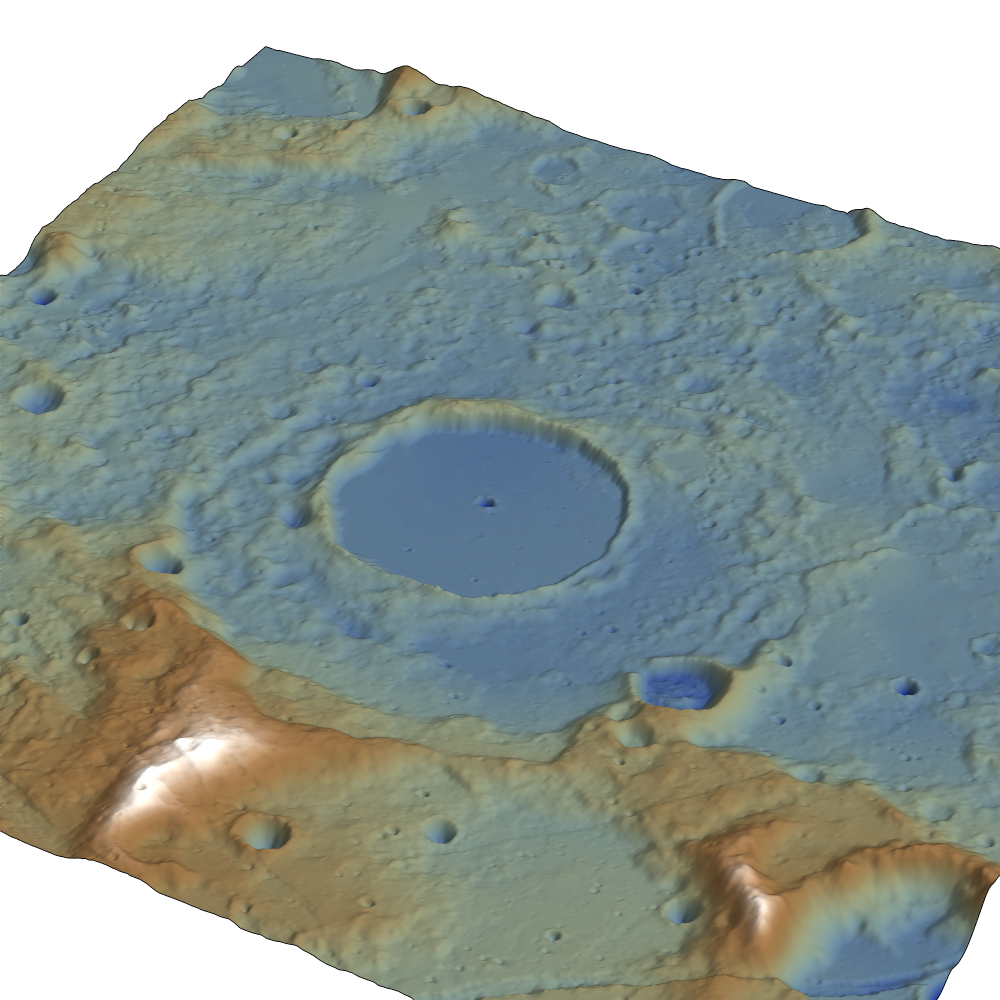
But, the Moon isn't all about craters. There are other features as well. It has valleys like Vallis Schroteri. It is a sinuous valley or rille that is likely volcanic in origin
schroteri =
GeoElevationData[
GeoDisk[Entity["SolarSystemFeature", "VallisSchroteriMoon"],
Quantity[100, "Kilometers"]], GeoZoomLevel -> 7];
ListPlot3D[Reverse[schroteri], PlotRange -> All, Mesh -> None,
ColorFunction -> "DarkTerrain", BoxRatios -> {1, 1, .05}, ImageSize -> 1000,
SphericalRegion -> True, ViewAngle -> Pi/15, Boxed -> False, Axes -> False,
ViewPoint -> {-2, 1.78, 2.04}]
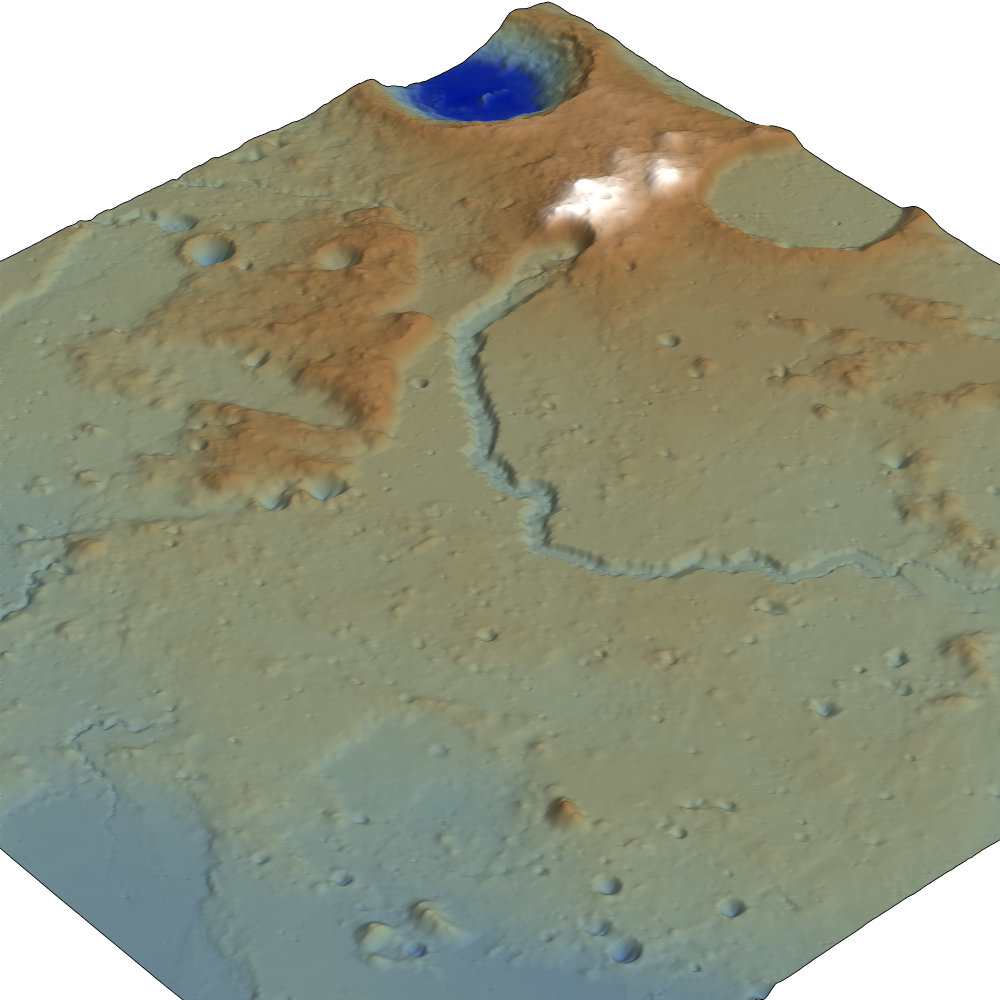
Rima Ariadaeus is a linear rille on the Moon. It is likely a fault trough that formed when the ground sank between 2 parallel fault lines.
rimaariadaeus =
GeoElevationData[
GeoDisk[Entity["SolarSystemFeature", "RimaAriadaeusMoon"],
Quantity[100, "Kilometers"]], GeoZoomLevel -> 7];
ListPlot3D[Reverse[rimaariadaeus], PlotRange -> All, Mesh -> None,
ColorFunction -> "DarkTerrain", BoxRatios -> {1, 1, .05}, ImageSize -> 1000,
SphericalRegion -> True, ViewAngle -> Pi/15, Boxed -> False, Axes -> False]
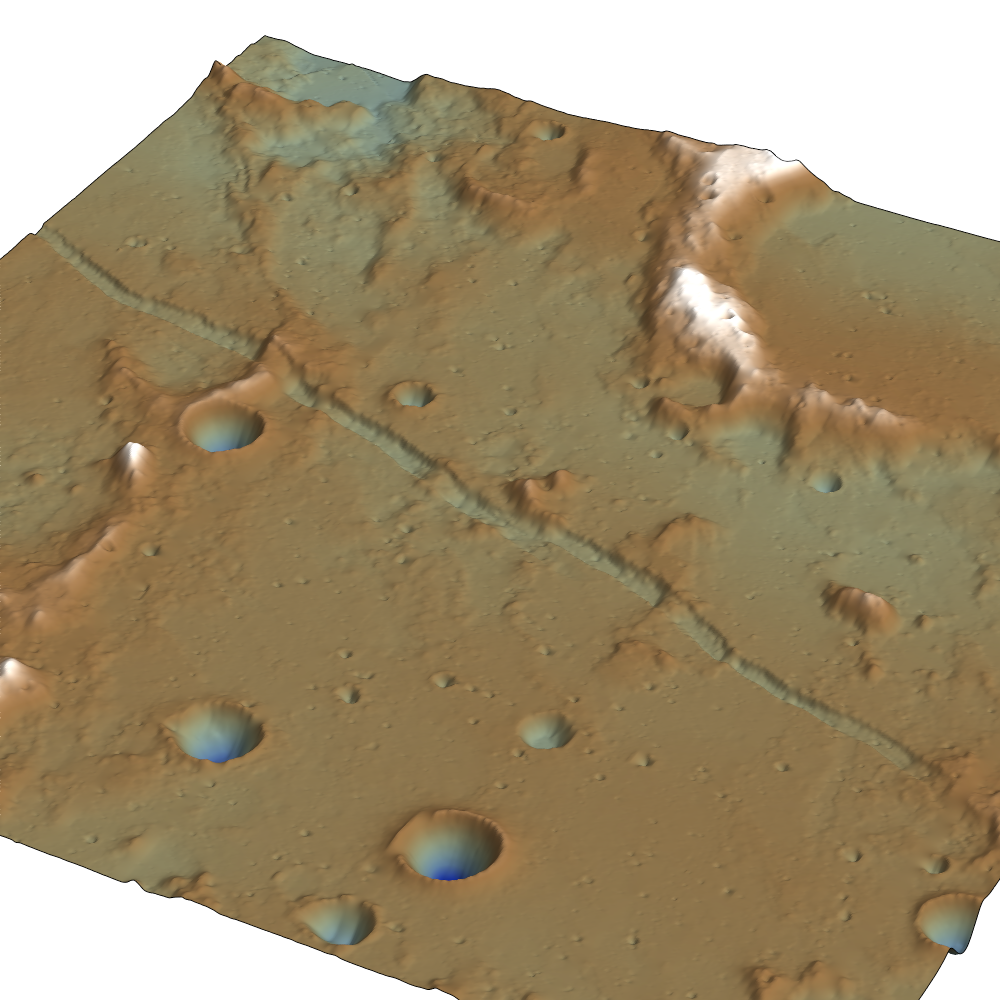
In addition to craters and valleys, the Moon has numerous mountains and mountain ranges. One of the largest is Montes Apenninus which borders on the edge of one of the Moon's maria.
montesapenninus =
GeoElevationData[
GeoDisk[Entity["SolarSystemFeature", "MontesApenninusMoon"],
Quantity[100, "Kilometers"]], GeoZoomLevel -> 7];
ListPlot3D[Reverse[montesapenninus], PlotRange -> All, Mesh -> None,
ColorFunction -> "DarkTerrain", BoxRatios -> {1, 1, .05}, ImageSize -> 1000,
SphericalRegion -> True, ViewAngle -> Pi/15, Boxed -> False, Axes -> False]
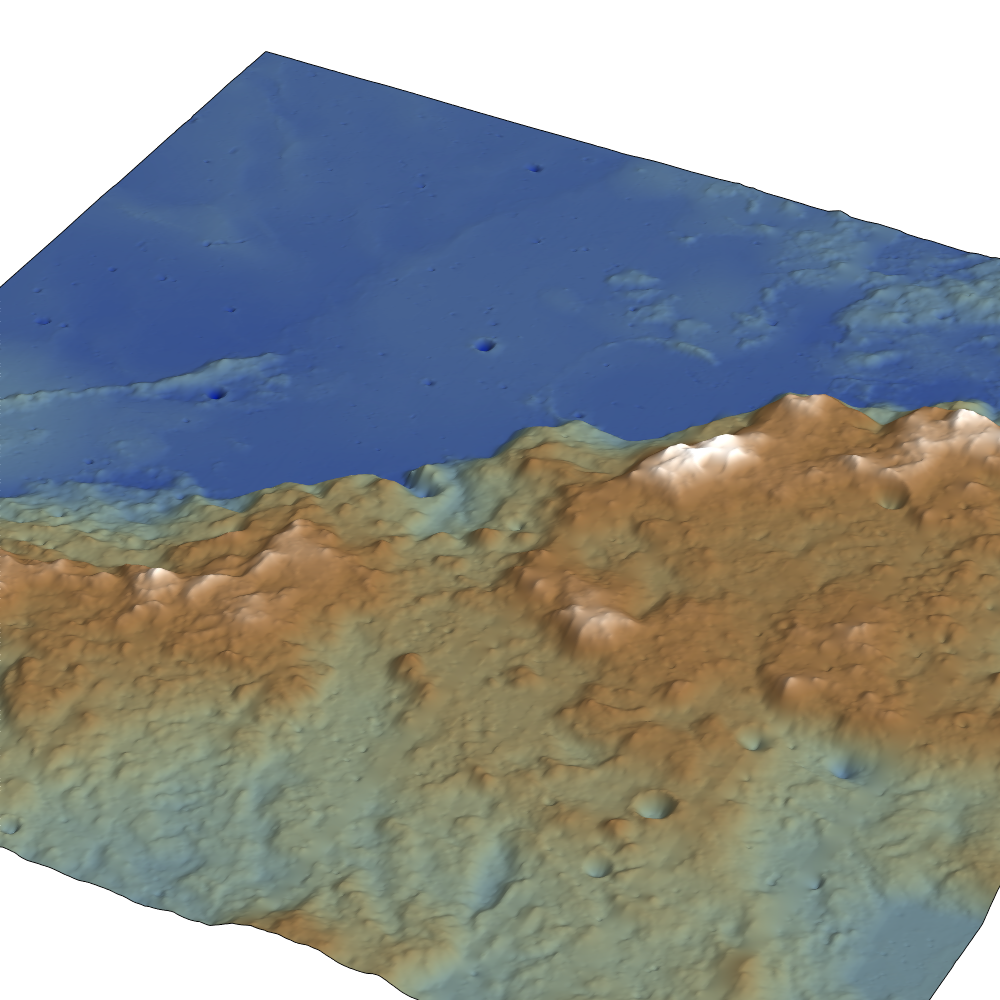
In addition to visualizing 3D data directly, this elevation data can be accessed from GeoGraphics via the GeoStyling["ReliefMap"] value to the GeoBackground option. The results make use of the elevation data, but they are raster in nature.
GeoGraphics[GeoModel -> Entity["PlanetaryMoon", "Moon"],
GeoBackground -> GeoStyling["ReliefMap"], GeoRange -> All, ImageSize -> 1000]
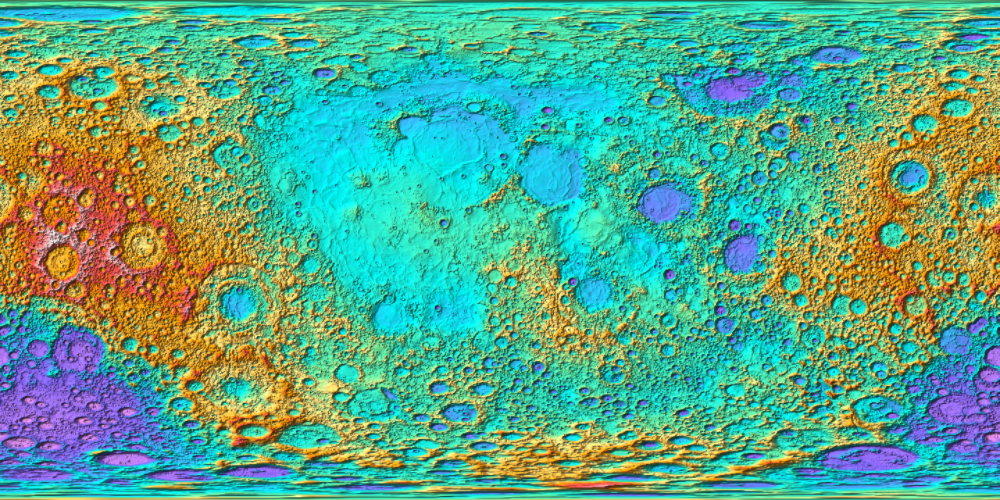
One final thought concerning exploring the Moon is that not all of the interesting lunar features can be seen in elevation data. There are a number of features that don't have much of an impact (pun intended) in the elevation data. These albedo features seem to be just surface blemishes. Reiner Gamma is one such feature that looks like a surface blemish in satellite imagery, but in the elevation data there is little correlation to what is seen visually. There are some nearby "wrinkles" that seem to correlate with some parts of the "lunar swirl", but the oval feature is essentially absent in the elevation data.
Row[{GeoGraphics[{Entity["SolarSystemFeature", "ReinerGammaMoon"]},
GeoRange -> Quantity[150, "Kilometers"], ImageSize -> 500],
GeoGraphics[{Entity["SolarSystemFeature", "ReinerGammaMoon"]},
GeoRange -> Quantity[150, "Kilometers"],
GeoBackground -> GeoStyling["ReliefMap"], ImageSize -> 500]}]
